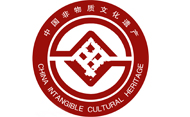Chinese Guqin Masters to Discuss Protection of the Seven-string Instrument Art
The early June, 35 guqin heritors and masters will get together in Chengdu to discuss the protection of the art of guqin, a plucked seven-string Chinese musical instrument of the zither family. This activity is an important part of the Third International Festival of Intangible Cultural Heritage.
According to the committee, 35 world famous guqin players, scholars and makers including Gong Yi, Cheng Gonglian and Ding Chengdu will gather at Chengdu Jinsha Site Museum during the festival. Academic discussion and exchange between these scholars will be centered on the protection, inheritance, innovation and development of guqin in the new era.
Eighteen guqin concert performances and appreciations of different themes will be held during the festival. In addition, a fair of guqin will be open at Chengdu Intangible Cultural Heritage Park. At the fair, visitors will appreciate lots of precious guqin from Zhou Dynasty (c.11th century – 256 BC), Warring States Dynasty (475 – 221 BC), Han Dynasty (206 BC – 220 AD), Tang Dynasty (AD 618 - 907), Song Dynasty (960 - 1279), Ming Dynasty (1368 - 1644) and Qing Dynasty (1644 - 1911); they can also enjoy new guqin made by modern guqin makers. It is reported that the fair is the largest guqin fair so far in China.
Guqin is also known as the seven-string Chinese musical instrument. Legend states the legendary figures of China's pre-history such as Fuxi and Shennong were involved in guqin’s creation. Guqin has a deep, rich voice and a mystical quality that is both jubilant and pensive. In 2003, guqin music was proclaimed as one of the Masterpieces of the Oral and Intangible Heritage of Humanity by United Nations Educational, Scientific and Cultural Organization (UNESCO).
Chengdu is one of the most famous places in China where guqin was highly developed. Guqin of Shu School has a long history with abundant pieces of music and large numbers of talents.
Translated by Jiang Yilingzi





